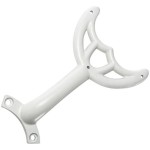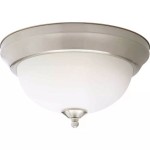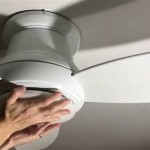Essential Aspects of Ceiling Light Fixture Clearance
When it comes to installing a ceiling light fixture, determining the appropriate clearance is essential for both safety and aesthetic reasons. The clearance refers to the vertical distance between the bottom of the fixture and the floor or any surface below it. Neglecting this aspect can compromise the safety of the occupants, damage the fixture, or disrupt the overall harmony of the room's design.
Several factors contribute to the optimal clearance for a ceiling light fixture. Let's delve into the key aspects to consider:
Building Codes and Regulations:
Following building codes and regulations is paramount. These codes specify the minimum clearances required for various ceiling heights and types of fixtures. By adhering to these regulations, you ensure compliance with safety standards and prevent potential hazards.
Fixture Design and Type:
The design and type of fixture influence the appropriate clearance. Pendant lights, for instance, require more clearance than flush-mounted fixtures. Consider the shape, size, and style of the fixture in relation to the surrounding space to maintain a balanced look.
Room Usage and Function:
The intended use of the room plays a significant role. In areas where people move frequently, such as walkways or kitchens, ample clearance is crucial to avoid obstructing movement or posing a hazard. Conversely, in spaces with limited headroom, like bathrooms or closets, a closer clearance may be necessary.
Eye Comfort and Glare:
Ensuring visual comfort is essential. The clearance should allow for the light to be distributed evenly without creating excessive glare. Consider the height of the fixture in relation to the eye level of the occupants to prevent discomfort or eye strain.
Aesthetics and Design:
Ceiling light fixture clearance is not solely about safety and functionality; it also impacts the overall aesthetics of the room. The clearance can affect the visual weight and proportion of the fixture within the space. A well-chosen clearance contributes to a harmonious and balanced design.
In conclusion, determining the appropriate ceiling light fixture clearance requires careful consideration of multiple factors, including building codes, fixture design, room function, eye comfort, and aesthetic appeal. By understanding these essential aspects, you can ensure that your ceiling light fixtures not only meet safety standards but also enhance the ambiance and beauty of your living spaces.

Clearance Rustic Flush Mount Ceiling Light Fixture Farmhouse Fixtures Two Metal And Wood Square Industrial Lighting For Bedroom Kitchen Balcony Com

Clearance Rustic Flush Mount Ceiling Light Fixture Farmhouse Fixtures Two Metal And Wood Square Industrial Lighting For Bedroom Kitchen Balcony Com

Clearance Rustic Flush Mount Ceiling Light Fixture Farmhouse Fixtures Two Metal And Wood Square Industrial Lighting For Bedroom Kitchen Balcony Com

Clearance Rustic Flush Mount Ceiling Light Fixture Farmhouse Fixtures Two Metal And Wood Square Industrial Lighting For Bedroom Kitchen Balcony Com

Clearance Rustic Flush Mount Ceiling Light Fixture Farmhouse Fixtures Two Metal And Wood Square Industrial Lighting For Bedroom Kitchen Balcony Com

Shengxiny Lighting Ceiling Lights Clearance Mini Chandelier Crystal Light Semi Flush Mount Fixture Modern Lamp Com

Dezsed Ceiling Fan Clearance Mini Chandelier Crystal Light Semi Mount Lighting Fixture Modern Lamp Gold Com

Clearance Rustic Ceiling Light River Cabin Unique Made In Usa Avalanche Ranch Lighting H46501 Denali Flush Cedar

Shengxiny Lighting Ceiling Lights Clearance Mini Chandelier Crystal Light Semi Flush Mount Fixture Modern Lamp Com

Shengxiny Lighting Ceiling Lights Clearance Mini Chandelier Crystal Light Semi Flush Mount Fixture Modern Lamp Com
Related Posts








